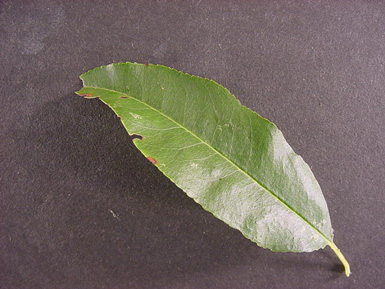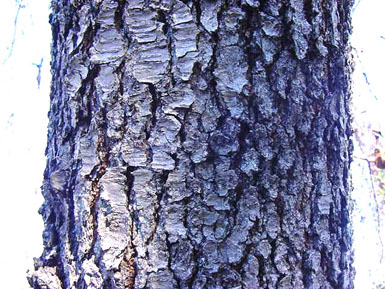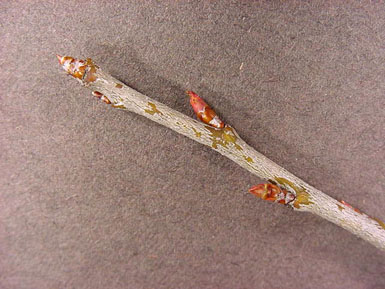Form: This tree is medium sized reaching 60 to 70 ft. in height and a 2 to 3 ft. dbh. It also has a narrow crown and shallow roots.
Leaves:
Arrangement: alternate
Shape: oval
Margin: finely serrated
Texture: brown tomentose on lower midrib; petiole with 2 small, black glands; dark green and lustrous above, paler below
Venation: glabrous

Bark: When the tree is young the bark is smooth and reddish-brown with horizontal lenticels. It later becomes black and scaly with age.

Twigs and buds: The twigs are slender and reddish brown to gray in color. The buds are covered by greenish to reddish-brown scales.

Flowers and fruit: The flowers appear in racemes and are white. The fruit is globose and almost black when ripe.
Distinguishing characteristics: The twigs have a bitter almond taste. Young bark has horizontal lenticels. The leaves are oval shaped.
Range: Occurs from central Florida north to Maine and west to Texas.
Silvics: This species is intolerant and occurs on varied, dry to moist sites. The best growth occurs on deep, rich soils.
Ecological and cultural importance: The wood is most valued for cabinetry and furniture. The wilted leaves are know to be poisonous to cattle but deer do consume them in moderation and seem to be unaffected.The fruit is excellent source of food for wildlife.